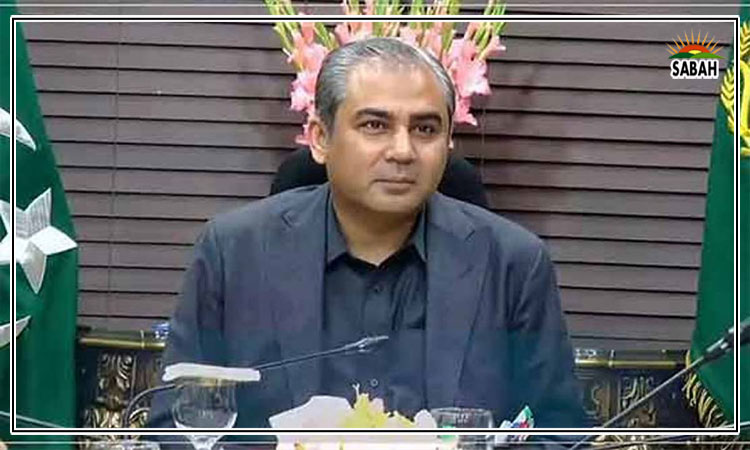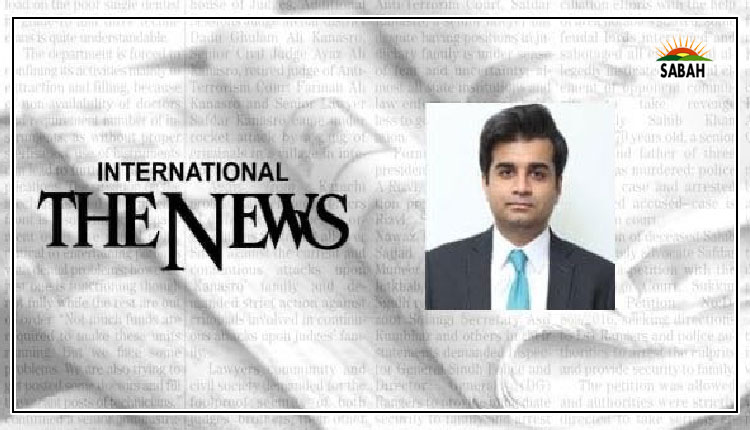Lazy manifestos …. Ammar Habib Khan
Pakistan is stuck in a low-growth trap. Structural inefficiencies accumulated over the last many years have led to a scenario where the country can barely achieve economic growth in excess of population growth, until it loses momentum again. Average growth rates over the last five years have been dismal, and any growth going forward remains illusory, since such growth requires an injection of foreign currency to satiate a never-ending demand for imports.
The economy remains heavily reliant on imports, and those imports require availability of foreign currency. In the absence of an industrial policy that incentivizes export growth, the country continues to require increasing amounts of foreign currency to push growth. Such foreign currency is only available through more borrowing, resulting in more debt, and a greater squeeze on the country’s finances.
Abject refusal of successive governments and tax bodies to actually undergo necessary reforms has led to a scenario where our tax collections remain dismal in real terms, while expenditures continue to grow. The government eventually relies on more borrowing to fund its deficit. Government borrowing makes up almost 80 per cent of total broad money that exists in the economy – which effectively continues to drive double digit inflation. Until the time the government fixes its twin deficits, we will continue to sulk in a low-growth trap.
The economic growth model is broken. Any growth that has been attained in the last one decade has been on the back of consumption, fueled by imports, which were supported by inflow of foreign currency through more debt. As availability of foreign currency fizzles out, so does growth. Economic growth is predominantly driven by consumption, rather than investment or export-oriented production. The state has created an ultimate disaster where production is actually discouraged. Energy, which is the most fundamental building block of industrial activity, has been rigged in such a brutal way that its pricing is completely divorced from actual economic realities.
The government funds its fiscal deficits through higher electricity prices – running expansionary fiscal policy on the one hand, while contracting industrial activity through another via higher taxes and charges. Electricity prices have reached a point where consumption has flat-lined over the last five years on a per capita level. Not a single political party has any coherent plant to fix this mess. There cannot be any industrial growth, or any sustainable growth at all without fixing the energy value chain.
Expecting economic growth from the same old strategies is a fallacy at best. Election manifestos as released by major political parties continue to weave fantasies, with no political party coming up with any coherent plan to pull the country out of the low-growth trap. There is no economic plan. There is no social plan. There is no plan for any radical reform, or even any reform at that. The faces remain unchanged, and so do the policies.
The manifestors are still stuck in the twentieth century, as if we are reliving the nineties again, while the rest of the world has leapfrogged far ahead. One major political party continues to talk about providing free electricity without having any fiscal plan for this. Another one continues to obsess over maintaining an overvalued exchange rate, learning nothing from disastrous experiences earlier. The population of this country is stuck between a rock and a hard place – and even that space is shrinking.
There have been multiple lost decades, where the country has fallen behind its peers and many other regions of the world. In the absence of any tangible plan, we may be at the cusp of yet another lost decade, succumbing yet another generation to a life of misery, and stagnancy. We do not have problems that cannot be fixed. Economies across all regions have fixed similar problems, and have attained a sustainable growth trajectory. Our abject refusal to learn from earlier policy failures, and being obsessed with repeating the same mistakes again and again has led to a scenario where the country can simply not grow anymore without an injection of external debt – till the time the money runs out again.
The lack of seriousness of all major political parties is fairly evident at this point. The absence of any policy plans or frameworks or even basic direction clearly demonstrates that the next few years will also be driven by the usual faces making the usual sub-optimal and downright disastrous decisions. The lack of seriousness, or the inability to understand core problems by those at the helm is also apparent. No one in the country has an economic or a social plan.
There is a way out of this mess, and that is through fixing the energy value chain. Dissociate the fiscal policy from the energy policy, and reduce electricity prices through a mix of improved efficiency and better fiscal practices. The country can never ride out of this mess with the current taxation structure – there needs to be radical reform on how tax policy is formulated and how tax is collected, which needs to be based on economic principles rather than on the whims of personalities.
There needs to be a rethink of how we incentivize commercial enterprises to create competition and not just succumb to paying rents to the usual suspects time and again. We can either make policy decisions for the population of this country, or we can make decisions that benefit a few thousand households in the country. The country exists beyond wide boulevards of Constitution Avenue, something many policymakers conveniently forget.
The writer is an independent macroeconomist.
Courtesy The News












